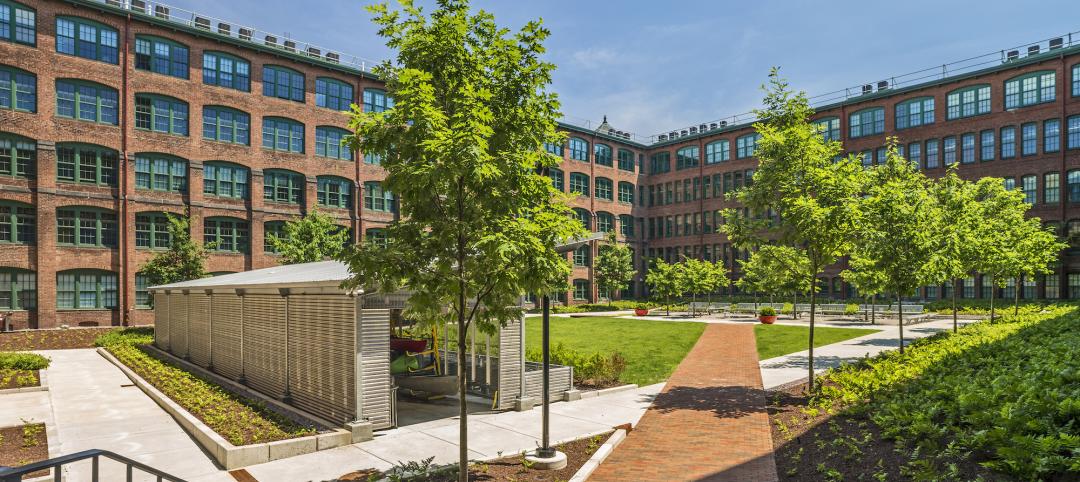Behavioral health facility construction is experiencing a spike in the U.S., due in part to enhanced benefit provisions in the Affordable Care Act that have widened access to mental health treatment. Recent gun violence, mass shootings, the opioid epidemic—these and other social issues with significant behavioral health implications have underscored the need for continued availability of mental health services and well-designed facilities in which to conduct them.
The 2017 Hospital Construction Survey, released jointly by Health Facilities Management and the American Society for Healthcare Engineering of the American Hospital Association, reported that half of the specialty hospitals planned for the next three years are behavioral health centers or psychiatric hospitals.
Yet even as the demand for new and retrofitted space is growing, the supply of behavioral health engineering and design experts is not keeping pace. The sector is also experiencing a decline of knowledge of leading practices in space design and technology integration.
This scenario—growing demand for behavioral health facility beds, accompanied by declining capacity of how to design them properly—is of particular concern when it comes to minimizing inpatient suicide in mental health settings.
After reading this article, you should be able to:
+ Describe the chief differences between designing for behavioral health and designing for general health.
+ Understand ligature risk and why gravity is irrelevant when identifying a ligature risk.
+ List the ways that improper interior design can negatively impact behavioral health patients.
+ Discuss how technology can assist behavioral health facilities to achieve greater patient safety.
TAKE THIS FREE AIA CES COURSE AT BDCUNIVERSITY
Related Stories
Sponsored | BD+C University Course | Jan 17, 2024
Waterproofing deep foundations for new construction
This continuing education course, by Walter P Moore's Amos Chan, P.E., BECxP, CxA+BE, covers design considerations for below-grade waterproofing for new construction, the types of below-grade systems available, and specific concerns associated with waterproofing deep foundations.
Sponsored | Performing Arts Centers | Jan 17, 2024
Performance-based facilities for performing arts boost the bottom line
A look at design trends for “budget-wise” performing arts facilities reveals ways in which well-planned and well-built facilities help performers and audiences get the most out of the arts. This continuing education course is worth 1.0 AIA learning unit.
Sponsored | MFPRO+ Course | Oct 30, 2023
For the Multifamily Sector, Product Innovations Boost Design and Construction Success
This course covers emerging trends in exterior design and products/systems selection in the low- and mid-rise market-rate and luxury multifamily rental market. Topics include facade design, cladding material trends, fenestration trends/innovations, indoor/outdoor connection, and rooftop spaces.
Sponsored | Fire and Life Safety | Jul 12, 2023
Fire safety considerations for cantilevered buildings [AIA course]
Bold cantilevered designs are prevalent today, as developers and architects strive to maximize space, views, and natural light in buildings. Cantilevered structures, however, present a host of challenges for building teams, according to José R. Rivera, PE, Associate Principal and Director of Plumbing and Fire Protection with Lilker.
Sponsored | Building Enclosure Systems | May 16, 2023
4 steps to a better building enclosure
Dividing the outside environment from the interior, the building enclosure is one of the most important parts of the structure. The enclosure not only defines the building’s aesthetic, but also protects occupants from the elements and facilitates a comfortable, controlled climate. With dozens of components comprising the exterior assemblies, from foundation to cladding to roof, figuring out which concerns to address first can be daunting.
Sponsored | Cladding and Facade Systems | Mar 15, 2023
Metal cladding trends and innovations
Metal cladding is on a growth trajectory globally. This is reflected in rising demand for rainscreen cladding and architectural metal coatings. This course covers the latest trends and innovations in the metal cladding market.
Sponsored | Resiliency | Dec 14, 2022
Flood protection: What building owners need to know to protect their properties
This course from Walter P Moore examines numerous flood protection approaches and building owner needs before delving into the flood protection process. Determining the flood resilience of a property can provide a good understanding of risk associated costs.
Sponsored | Multifamily Housing | Dec 14, 2022
Urban housing revival: 3 creative multifamily housing renovations
This continuing education course from Bruner/Cott & Associates highlights three compelling projects that involve reimagining unlikely buildings for compelling multifamily housing developments.
Sponsored | Steel Buildings | Nov 7, 2022
Steel structures offer faster path to climate benefits
Faster delivery of buildings isn’t always associated with sustainability benefits or long-term value, but things are changing. An instructive case is in the development of steel structures that not only allow speedier erection times, but also can reduce embodied carbon and create durable, highly resilient building approaches.
Sponsored | BD+C University Course | Aug 24, 2022
Solutions for cladding performance and supply issues
This course covers design considerations and cladding assembly choices for creating high-performance building envelopes — a crucial element in healthy, energy-efficient buildings.


![Designing behavioral health facilities [AIA course] Designing behavioral health facilities [AIA course]](/sites/default/files/AIA_BDC0418.jpg)












